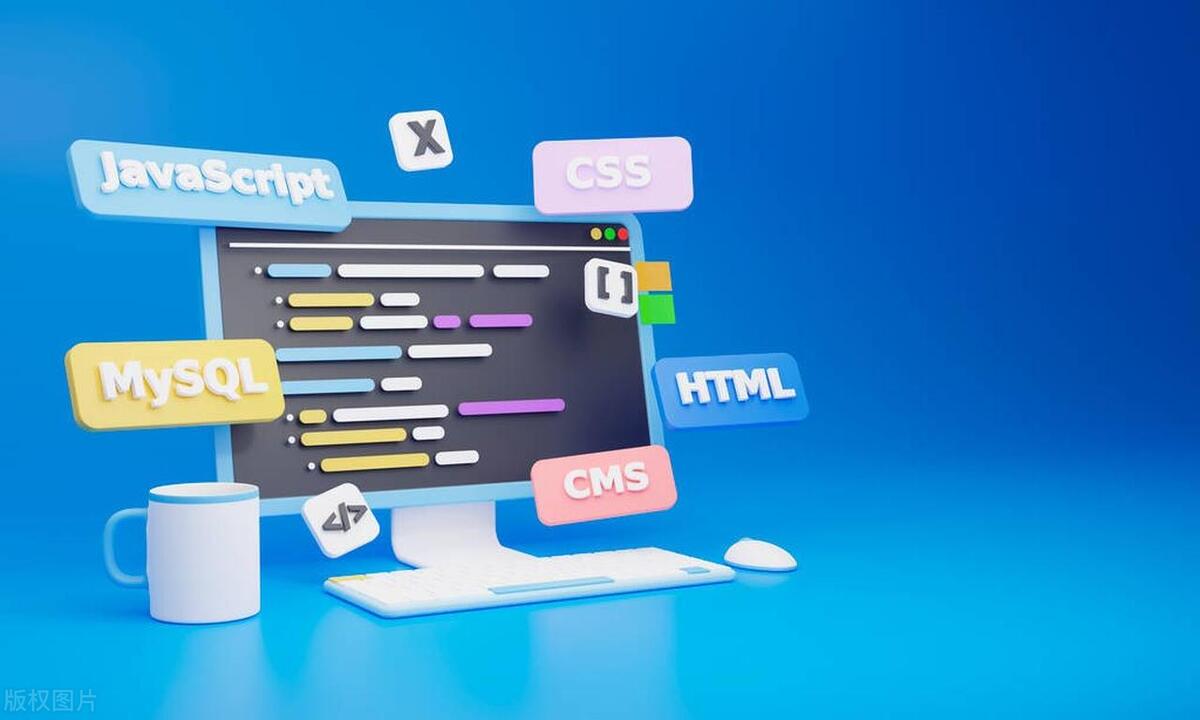 Web Front-end
Web Front-end
 Front-end Q&A
Front-end Q&A
 Creating Sticky Navigation Headers or Sidebars with CSS position: sticky
Creating Sticky Navigation Headers or Sidebars with CSS position: sticky
Creating Sticky Navigation Headers or Sidebars with CSS position: sticky
Jul 09, 2025 am 02:20 AMposition: sticky The key to implementing a sticky navigation bar or sidebar is to correctly set positioning properties and understand usage restrictions. 1. It must be used with top, bottom, left or right, and the parent container cannot have properties such as overflow: hidden, transform or filter; 2. When used in the navigation bar, z-index and background colors must be set to ensure visibility and readability, and pay attention to the hierarchical relationship of multiple sticky elements and content occlusion issues; 3. When implementing the sidebar, you need to set the top value and height: fit-content to prevent the screen from being full, and scrolling support should be added if necessary; 4. Pay attention to compatibility. Mainstream browsers have good support, but IE does not support it, and alternatives are required to avoid common style traps. Only by mastering these key points can you ensure sticky works as expected.

Using CSS's position: sticky to implement sticky navigation bar or sidebar is a practical and not difficult to implement. It allows an element to "stick" on the screen when scrolling a page, such as common top navigation or side menus. The key is to understand its usage conditions and limitations, otherwise it is easy to "how it doesn't take effect".

1. Basic grammar and necessary conditions
position: sticky looks simple, but must be used with top , bottom , left or right , otherwise it will fail. For example:

.sticky-nav {
position: sticky;
top: 0;
} After writing this way, .sticky-nav will be fixed to the screen when scrolling to 0px from the top.
But note:
- It must have a clear positioning value (such as
top: 0) and cannot just writeposition: sticky. - The parent container cannot be
overflow: hiddenortransform,filterand other attributes, otherwise sticky will be disabled. - The sticky element is positioned relative to the most recent scrolling ancestor element, rather than the entire page.
2. Common practices used on the navigation bar
The top navigation bar is the most common application scenario. You can put it at the top of the page so that it is always visible while scrolling:

<nav class="sticky-nav">...</nav>
.sticky-nav {
position: sticky;
top: 0;
z-index: 1000;
background: white;
} z-index is added to prevent being covered by other content, and the background color is to make the content readable (especially when scrolling).
In practice, you may encounter:
- When the page has multiple sticky elements, they are overwritten in turn
- The contents below the navigation bar may be blocked, you can use
margin-topto adjust the spacing.
3. How to achieve sticky effect in the sidebar
In addition to top navigation, the sidebar can also be fixed with sticky. Structurally, there is usually a left area plus the main content area:
<div class="container"> <aside class="sidebar">This is the sidebar</aside> <main class="content">Main content</main> </div>
The corresponding CSS can be written like this:
.sidebar {
position: sticky;
top: 20px; /* Start to fix at a certain distance from the top*/
height: fit-content; /* Prevent the screen height from being full*/
} This way, when the user scrolls the page, the sidebar stops at the right position and does not exceed the content height.
Tips:
- Add
max-heightandoverflow-y: autoto.sidebarto keep scrolling under long content - Pay attention to the layout width to avoid sticky elements affecting the main content layout
4. Compatibility and precautions
Although mainstream browsers support position: sticky , it is not applicable in older versions (such as IE). If you need to be compatible with these environments, you may have to use JavaScript to simulate or consider alternatives.
Some other places that are prone to pitfalls:
- Forgot to set
toporleft, resulting in invalid - The parent container has been set to
overflow: hidden, sticky is invalid - The scroll container is not the viewport itself (such as scrolling inside a div), and sticky behavior will be different
Basically that's it. The key to using position: sticky is to figure out the context and style limitations it depends on. It looks simple, but if the details are not handled properly, problems will be easily arise.
The above is the detailed content of Creating Sticky Navigation Headers or Sidebars with CSS position: sticky. For more information, please follow other related articles on the PHP Chinese website!

Hot AI Tools

Undress AI Tool
Undress images for free

Undresser.AI Undress
AI-powered app for creating realistic nude photos

AI Clothes Remover
Online AI tool for removing clothes from photos.

Clothoff.io
AI clothes remover

Video Face Swap
Swap faces in any video effortlessly with our completely free AI face swap tool!

Hot Article

Hot Tools

Notepad++7.3.1
Easy-to-use and free code editor

SublimeText3 Chinese version
Chinese version, very easy to use

Zend Studio 13.0.1
Powerful PHP integrated development environment

Dreamweaver CS6
Visual web development tools

SublimeText3 Mac version
God-level code editing software (SublimeText3)
 How does React handle focus management and accessibility?
Jul 08, 2025 am 02:34 AM
How does React handle focus management and accessibility?
Jul 08, 2025 am 02:34 AM
React itself does not directly manage focus or accessibility, but provides tools to effectively deal with these issues. 1. Use Refs to programmatically manage focus, such as setting element focus through useRef; 2. Use ARIA attributes to improve accessibility, such as defining the structure and state of tab components; 3. Pay attention to keyboard navigation to ensure that the focus logic in components such as modal boxes is clear; 4. Try to use native HTML elements to reduce the workload and error risk of custom implementation; 5. React assists accessibility by controlling the DOM and adding ARIA attributes, but the correct use still depends on developers.
 Describe the difference between shallow and full rendering in React testing.
Jul 06, 2025 am 02:32 AM
Describe the difference between shallow and full rendering in React testing.
Jul 06, 2025 am 02:32 AM
Shallowrenderingtestsacomponentinisolation,withoutchildren,whilefullrenderingincludesallchildcomponents.Shallowrenderingisgoodfortestingacomponent’sownlogicandmarkup,offeringfasterexecutionandisolationfromchildbehavior,butlacksfulllifecycleandDOMinte
 What is the significance of the StrictMode component in React?
Jul 06, 2025 am 02:33 AM
What is the significance of the StrictMode component in React?
Jul 06, 2025 am 02:33 AM
StrictMode does not render any visual content in React, but it is very useful during development. Its main function is to help developers identify potential problems, especially those that may cause bugs or unexpected behavior in complex applications. Specifically, it flags unsafe lifecycle methods, recognizes side effects in render functions, and warns about the use of old string refAPI. In addition, it can expose these side effects by intentionally repeating calls to certain functions, thereby prompting developers to move related operations to appropriate locations, such as the useEffect hook. At the same time, it encourages the use of newer ref methods such as useRef or callback ref instead of string ref. To use Stri effectively
 Vue with TypeScript Integration Guide
Jul 05, 2025 am 02:29 AM
Vue with TypeScript Integration Guide
Jul 05, 2025 am 02:29 AM
Create TypeScript-enabled projects using VueCLI or Vite, which can be quickly initialized through interactive selection features or using templates. Use tags in components to implement type inference with defineComponent, and it is recommended to explicitly declare props and emits types, and use interface or type to define complex structures. It is recommended to explicitly label types when using ref and reactive in setup functions to improve code maintainability and collaboration efficiency.
 Server-Side Rendering with Next.js Explained
Jul 23, 2025 am 01:39 AM
Server-Side Rendering with Next.js Explained
Jul 23, 2025 am 01:39 AM
Server-siderendering(SSR)inNext.jsgeneratesHTMLontheserverforeachrequest,improvingperformanceandSEO.1.SSRisidealfordynamiccontentthatchangesfrequently,suchasuserdashboards.2.ItusesgetServerSidePropstofetchdataperrequestandpassittothecomponent.3.UseSS
 A Deep Dive into WebAssembly (WASM) for Front-End Developers
Jul 27, 2025 am 12:32 AM
A Deep Dive into WebAssembly (WASM) for Front-End Developers
Jul 27, 2025 am 12:32 AM
WebAssembly(WASM)isagame-changerforfront-enddevelopersseekinghigh-performancewebapplications.1.WASMisabinaryinstructionformatthatrunsatnear-nativespeed,enablinglanguageslikeRust,C ,andGotoexecuteinthebrowser.2.ItcomplementsJavaScriptratherthanreplac
 Vue CLI vs Vite: Choosing Your Build Tool
Jul 06, 2025 am 02:34 AM
Vue CLI vs Vite: Choosing Your Build Tool
Jul 06, 2025 am 02:34 AM
Vite or VueCLI depends on project requirements and development priorities. 1. Startup speed: Vite uses the browser's native ES module loading mechanism, which is extremely fast and cold-start, usually completed within 300ms, while VueCLI uses Webpack to rely on packaging and is slow to start; 2. Configuration complexity: Vite starts with zero configuration, has a rich plug-in ecosystem, which is suitable for modern front-end technology stacks, VueCLI provides comprehensive configuration options, suitable for enterprise-level customization but has high learning costs; 3. Applicable project types: Vite is suitable for small projects, rapid prototype development and projects using Vue3, VueCLI is more suitable for medium and large enterprise projects or projects that need to be compatible with Vue2; 4. Plug-in ecosystem: VueCLI is perfect but has slow updates,
 How to manage component state using immutable updates in React?
Jul 10, 2025 pm 12:57 PM
How to manage component state using immutable updates in React?
Jul 10, 2025 pm 12:57 PM
Immutable updates are crucial in React because it ensures that state changes can be detected correctly, triggering component re-rendering and avoiding side effects. Directly modifying state, such as push or assignment, will cause React to be unable to detect changes. The correct way to do this is to create new objects instead of old objects, such as updating an array or object using the expand operator. For nested structures, you need to copy layer by layer and modify only the target part, such as using multiple expansion operators to deal with deep attributes. Common operations include updating array elements with maps, deleting elements with filters, adding elements with slices or expansion. Tool libraries such as Immer can simplify the process, allowing "seemingly" to modify the original state but generate new copies, but increase project complexity. Key tips include each





